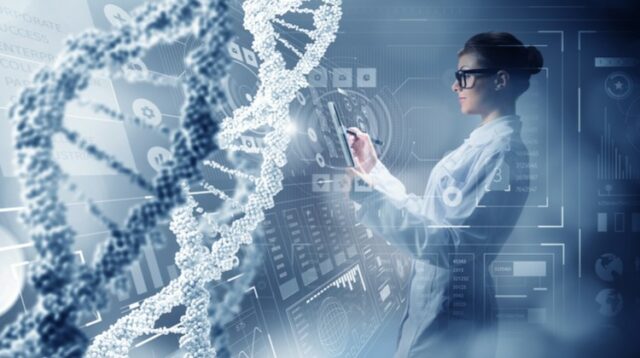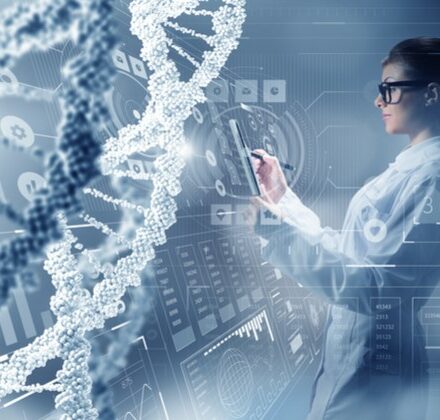Digital transformation is a directive that organizations of all shapes and sizes are striving to achieve and for those of us in services, it’s no different. We’re constantly innovating, implementing and improving on capabilities that make it easier for customers to adopt and optimize technology that will transform their businesses and lives. In the recently released Dell Technologies 2018 Predictions, reference was made to how things such as artificial intelligence (AI), augmented reality (AR), machine learning and deep learning (ML, DL) – essentially data science – will work hand-in-hand with humans to enable deeper relationships with customers.
There’s a quote from MIT Media Lab founder, Nicholas Negroponte that says: “Computing is not about computers anymore. It is about living.” I couldn’t agree more. When it comes to services, it’s no longer just about technology, it’s about making support and deployment as smooth as possible and enhancing and augmenting the customer’s experience with the products they’ve purchased.
Today, through connected technologies, we can proactively resolve system issues faster than ever before. We can even predict and address impending problems before they occur. So imagine the future impact that innovations in data science will have on the transformation of the service experience.
The Power of Customer DNA and Data Transparency
I’m a numbers guy. Coming from a background that includes finance and accounting, it’s no surprise I gravitate to them when contemplating and making decisions. From the simple act of using a calculator to track family vacation spending to leveraging the power of big data intelligence to predict outcomes, there is strength and even comfort in being able to base your actions on numeric proof. As customers navigate their digital transformations, they need us to take numbers and data further.
 There are many facets of what we refer to as a customer’s “DNA” that need to be understood. Customer DNA goes beyond their IT environment. We need to consider their business objectives, priorities, processes, preferences, and their own customers – all the things that make them successful. The customer journey starts with pre-sales and progresses through multiple stages. IT customers today are already leveraging data-driven, connected technologies for automated proactive and predictive support capabilities, and as they stay connected, IT service providers will be able to better serve them by gaining more information about their systems’ health. Pairing that with other information such as manufacturing, repair, call log and part supply data will result in a more holistic understanding of that customer’s needs.
There are many facets of what we refer to as a customer’s “DNA” that need to be understood. Customer DNA goes beyond their IT environment. We need to consider their business objectives, priorities, processes, preferences, and their own customers – all the things that make them successful. The customer journey starts with pre-sales and progresses through multiple stages. IT customers today are already leveraging data-driven, connected technologies for automated proactive and predictive support capabilities, and as they stay connected, IT service providers will be able to better serve them by gaining more information about their systems’ health. Pairing that with other information such as manufacturing, repair, call log and part supply data will result in a more holistic understanding of that customer’s needs.
Transparency is also an important aspect of being able to provide timely value to customers through services. By putting predictive models in front of the customer, having collaborative conversations about the data, and giving them the ability to interact with and explore it, they will be able to ask the questions that are important to them so they can make decisions that are key to their day-to-day operations and how they move forward with their digital transformations. For instance, a customer may have a problem they are struggling to clearly identify within their environment. The data can uncover the true root cause of that issue, validating or negating their perception and helping them get to a better understanding of what’s going on.
Deep Learning = an Even Deeper Understanding
Over the next few years the transition from machine learning to deep learning will facilitate continuous growth models that along with the use of data contextualization, will provide better and better understanding of customer DNA. We use machine learning today with connected technologies leveraging AI for predictive cases, and deep learning, along with the added benefits it brings, is close at its heels.
 With deep learning, we move from looking at a handful of scenarios to looking at hundreds of attributes over billions of records and can identify patterns that will equate to a faster, more accurate model that can be extended to multiple parts and lines of business. What used to take days or hours will take minutes and if we understand the behavior of each system in a customer’s environment, insight can be provided back to product design and sales so what is offered to the customer next will be based on their individual, customized needs.
With deep learning, we move from looking at a handful of scenarios to looking at hundreds of attributes over billions of records and can identify patterns that will equate to a faster, more accurate model that can be extended to multiple parts and lines of business. What used to take days or hours will take minutes and if we understand the behavior of each system in a customer’s environment, insight can be provided back to product design and sales so what is offered to the customer next will be based on their individual, customized needs.
One important theme to remember is that connectivity is a key enabler of this ongoing evolution. In order to train models to predict different aspects of the customer’s experience, it has to be a two-way conversation. The more data received and the farther back it goes, the more accurate and personalized the predictions.
Offsite Doesn’t Have to Mean out of Sight
AR is another exciting piece that will change how customers experience the delivery of services in the coming years. Things are moving from overlays where the repair technician wears an AR headset to bring up 2D instructions (a technical manual is projected to the upper right side of their vision) to entryways, where regardless of the orientation of the tech’s headset, the repair process is oriented in 3D to the exact object itself.
Applying that to connected technology, AI predictions would not only direct the technician to the problem, but with the added benefit of AR, they could perform the fix, reducing the need for higher level techs to go onsite. In addition to preventing and resolving issues, think about what this will mean in terms of possibilities for transferring knowledge to IT staff or being able to provide hands-on training to channel partners.
Faster Time to Insights = Faster Time to Value
As IT service providers, we must continue to recognize the power of getting the right information to the customer at the right time. We must equip our experts with the tools to help solve complex issues and break things down into accessible pieces of data customers can easily consume and act on. The faster we provide actionable insights, the faster issues are resolved and avoided, and system health and performance is optimized.
The innovation of data science enabled by the power of connected technology and the guidance of experts will speed time to value for customers on their investments and move the service experience into new realms. We will see IT services becoming even more predictive, more effortless and much more personalized. The transformative possibilities are truly limitless.
Want more information on the digital transformation of Dell Services?
Watch for an upcoming blog from our CTO and the “A Conversation with Two Data Geeks” podcast on this website to hear directly from the leaders and data scientists behind our transformative technologies.


